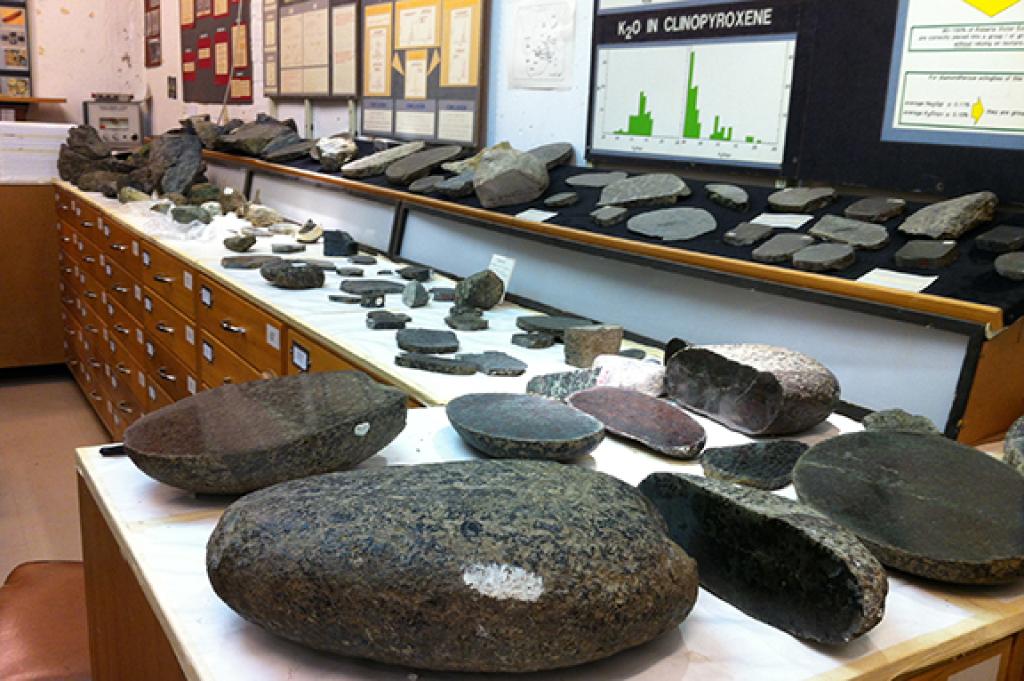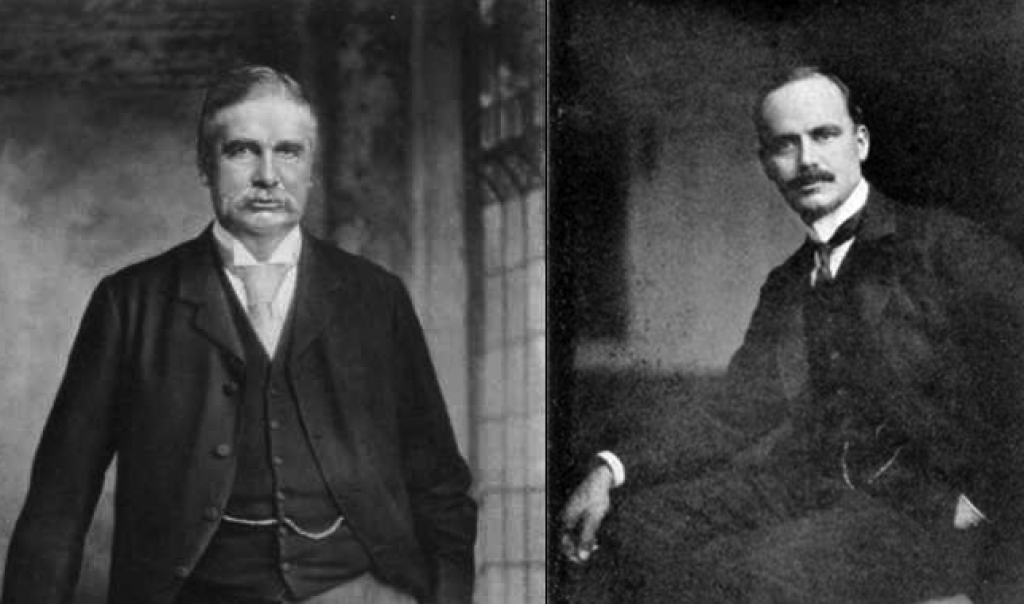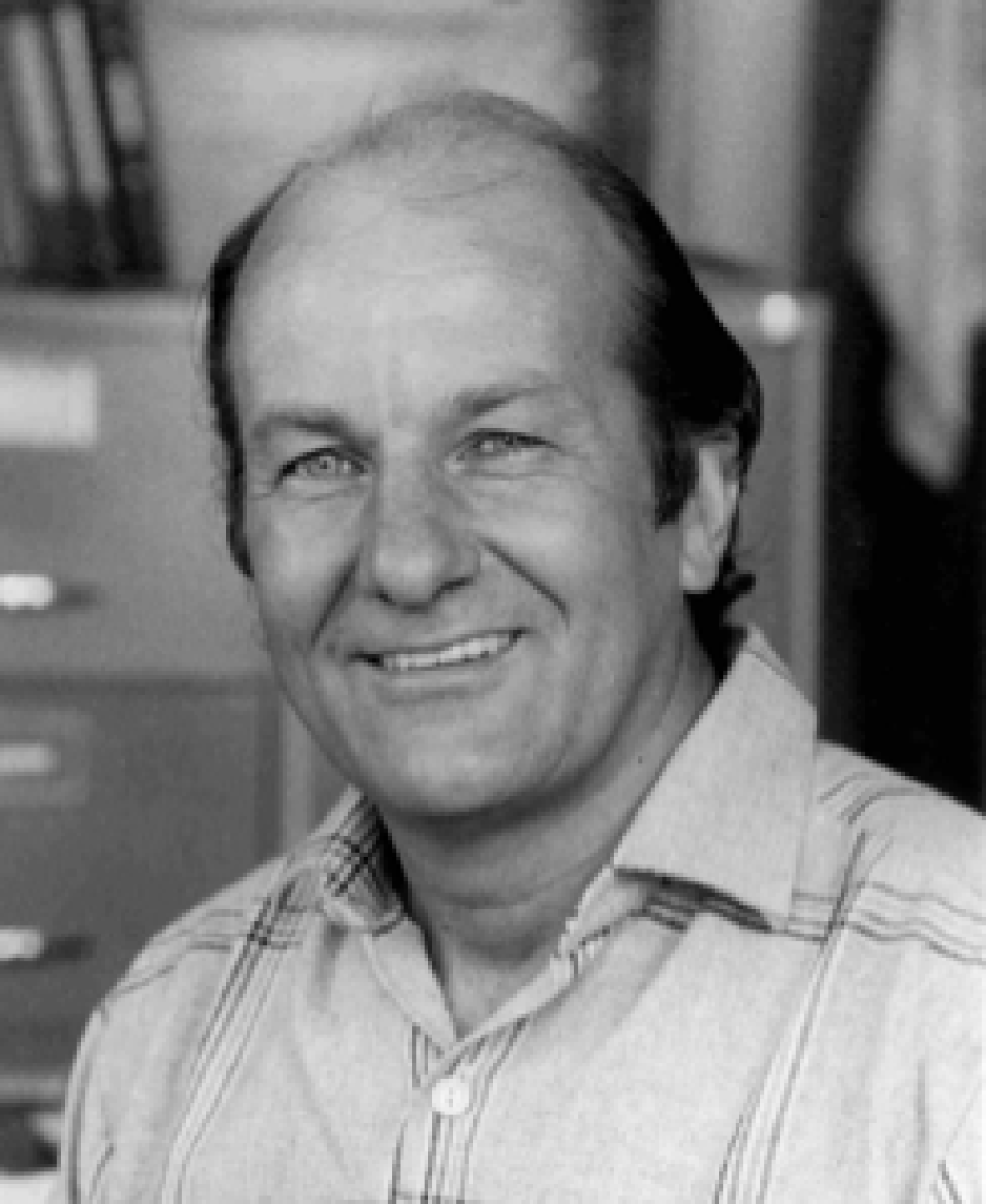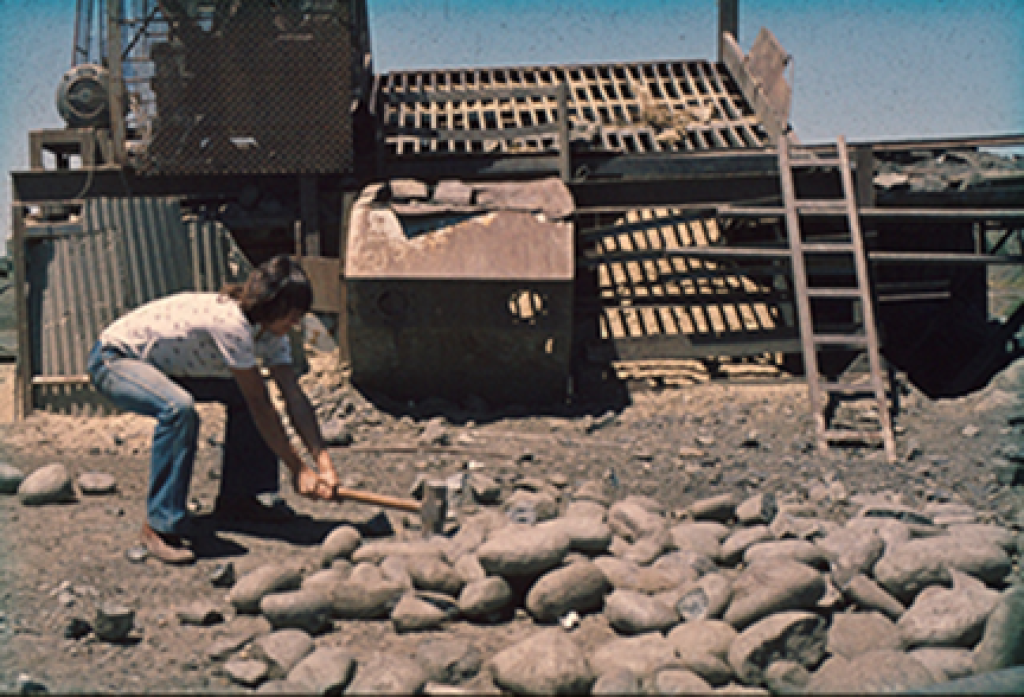
The University of Cape Town houses a collection of upper mantle-derived materials (mantle xenoliths and xenocrysts, kimberlites and related rocks and megacrysts, as well as deep crustal xenoliths) that is most likely the largest of its kind. The collection was assembled over the past 50 years and has been and continues to be an invaluable and irreplaceable resource for mantle research. Informally named the “Mantle Room” collection, it is maintained under the auspices of the Department of Geological Sciences.
The initial impetus for establishing a collection of mantle materials for research purposes in South Africa was provided by Gardner Williams and his son Alpheus Williams in the late 19th and early 20th century. These two American mining engineers shared a great interest in the mining methods and geology of the South African kimberlite-hosted diamond mines they were supervising. Each wrote books on the subject and the two men assembled a collection of scientifically interesting rock samples and minerals from the mines. Subsequent to the death of Alpheus Williams, the Williams family donated this collection to the Geology Department at UCT for teaching and research purposes.

However, this collection lay substantially unstudied until the Department of Geochemistry was created at UCT in the early 1960s to accommodate the appointment of Prof Louis Ahrens as head of department and professor of geochemistry. Ahrens identified this collection as being of exceptional research value and set about finding suitable PhD students in what was to become known as the Kimberlite Research Group. At that time, Prof. Ahrens also negotiated visits to the diamond mines in South Africa so that xenolith and kimberlite specimens could be added to those assembled by the Williams’ to make the collection more comprehensive. Scientific interest in the collection was augmented by Prof. Morna Mathias, at the time professor of mineralogy in the Department of Geology, who encouraged postgraduate studies on these upper mantle rocks. It rapidly became apparent that the nascent UCT upper mantle rock collection provided rare research specimens that were in great demand, which led to postdoctoral research opportunities overseas for former students Tony Erlank at the Geophysical Laboratory of the Carnegie Institution and John Gurney at the Smithsonian Institution both in Washington DC, USA. Out of the contacts and collaborations made through these research visits, it became clear that there was a significant international research community interested in using mantle-derived rocks, minerals and magmas to study the petrology/geochemistry, structure and evolution of the upper mantle. This led to the convening of the first International Kimberlite Conference at UCT in 1973, which was very well attended by researchers from Africa, North America, Europe, Asia and Australia. The huge success of the first International Kimberlite Conference has led to the convening of nine additional Kimberlite Conferences in the following years, most recently in Bangalore, India in 2012.

The first International Kimberlite Conference generated great enthusiasm and new ideas and led directly to the formation of the Kimberlite Research Group (KRG) at UCT headed by Prof. John Gurney. As a result, the number of postgraduate students undertaking active upper mantle research greatly increased and this provided the impetus for more field trips to collect upper mantle-related materials from kimberlites (those actively mined as well as non-economic and non-diamondiferous ones) mainly in southern Africa. Presentations by students and researchers in the KRG at international conferences, and participation in the associated field trips, made possible the collection of additional material from localities around the world. At every opportunity, potential mantle-related research material was collected and brought back to UCT for study and curation in the Mantle Room collection.
Today, the Mantle Room collection includes approximately 500 large boxes of xenolith, xenocryst and kimberlite samples from around the world, representing in aggregate approximately 20 tonnes of material. These specimens remain in great demand for research and teaching purposes, having provided research material for numerous honours projects and MSc and PhD degrees. It has also proved invaluable to researchers at universities and to exploration geologists around the world, who visit the collection several times per year. The collection is well curated, with all samples and associated information documented in an electronic database. Theses and publications resulting from investigation of Mantle Room specimens are also available for inspection.

Many researchers and students have contributed samples to the collection over the past 50 years and their generosity in contributing these materials, along with their time and effort in helping to build and maintain the collection, is gratefully acknowledged. In particular, a huge amount of effort has been put into constructing the data base that describes the collection and for that, Rory Moore, Marshall Otter and Eve Stredder in particular deserve a lot of the credit.
The Mantle Room collection continues to form a major research focus for academic staff in the Department of Geological Sciences, their students and international collaborators.